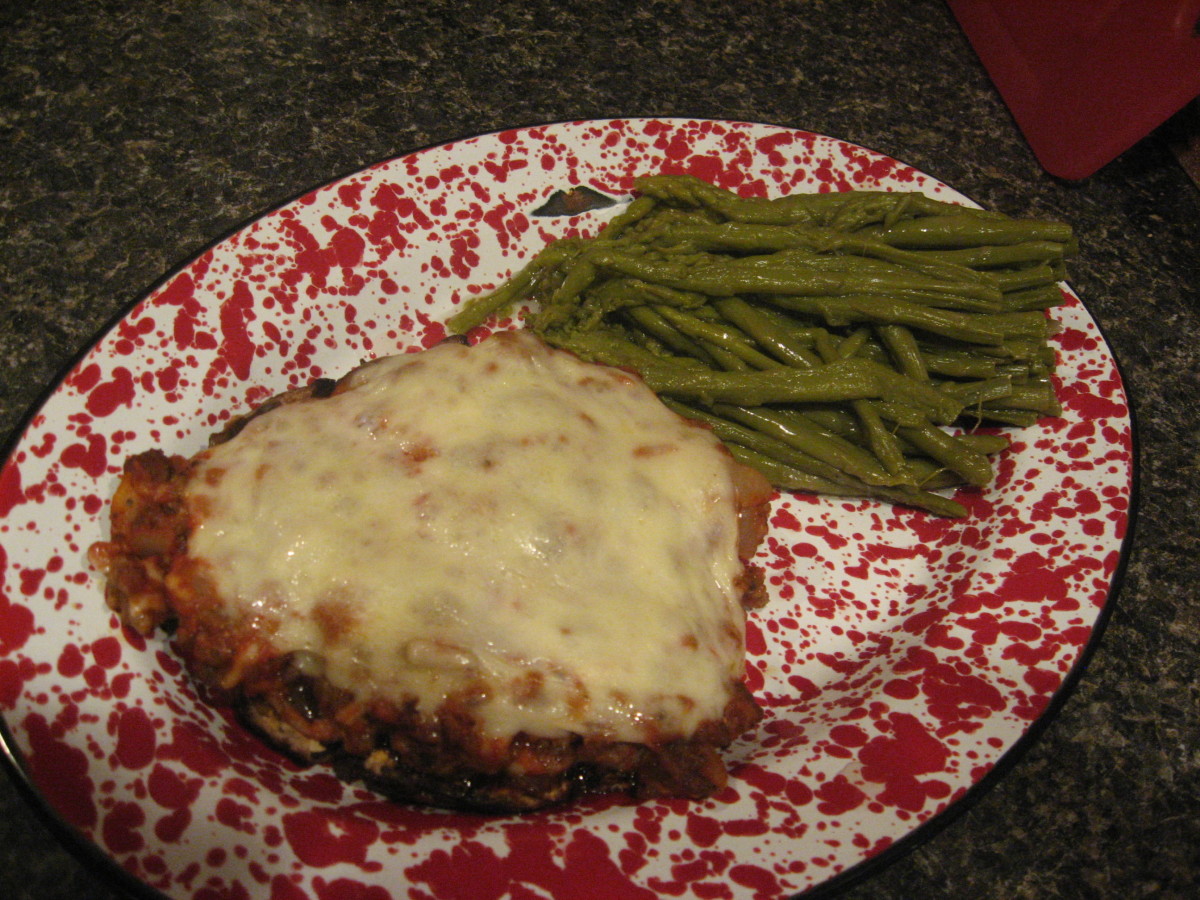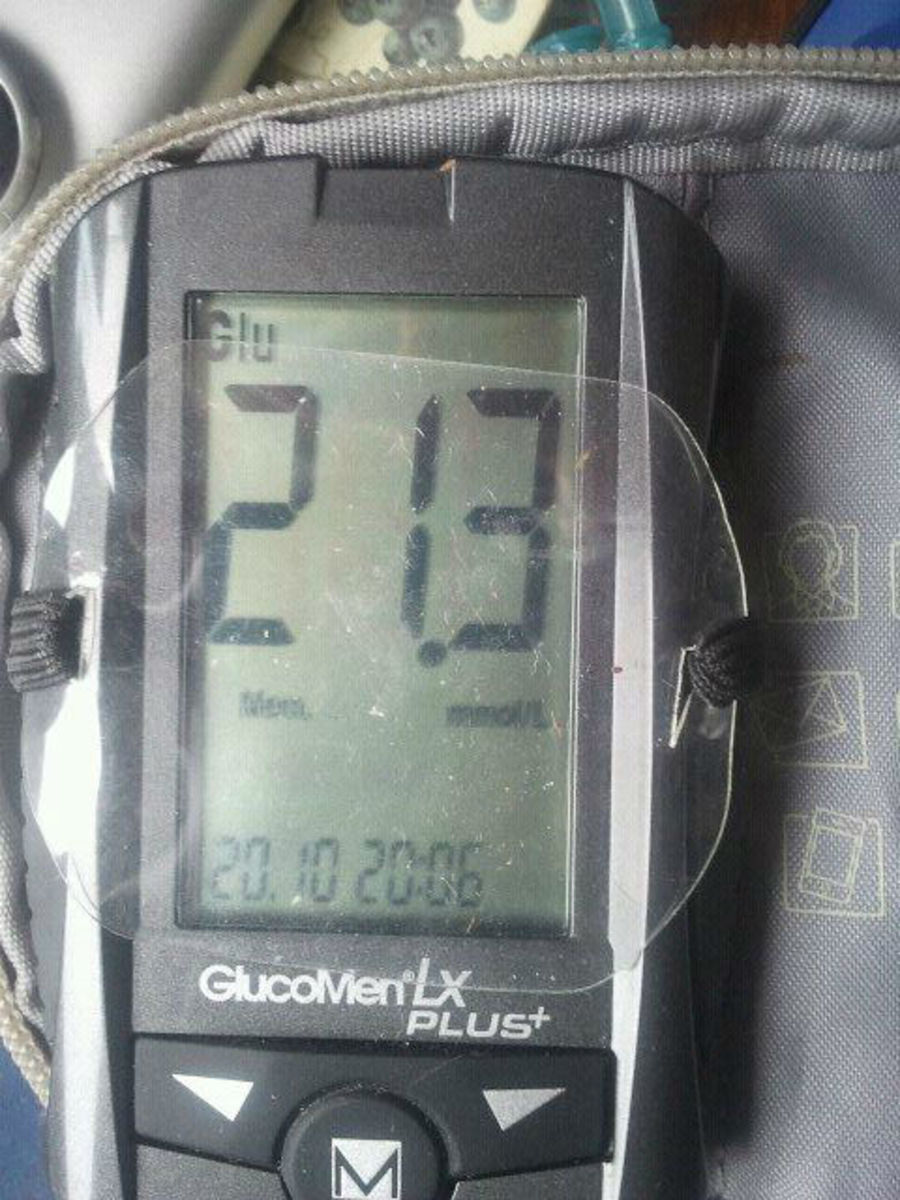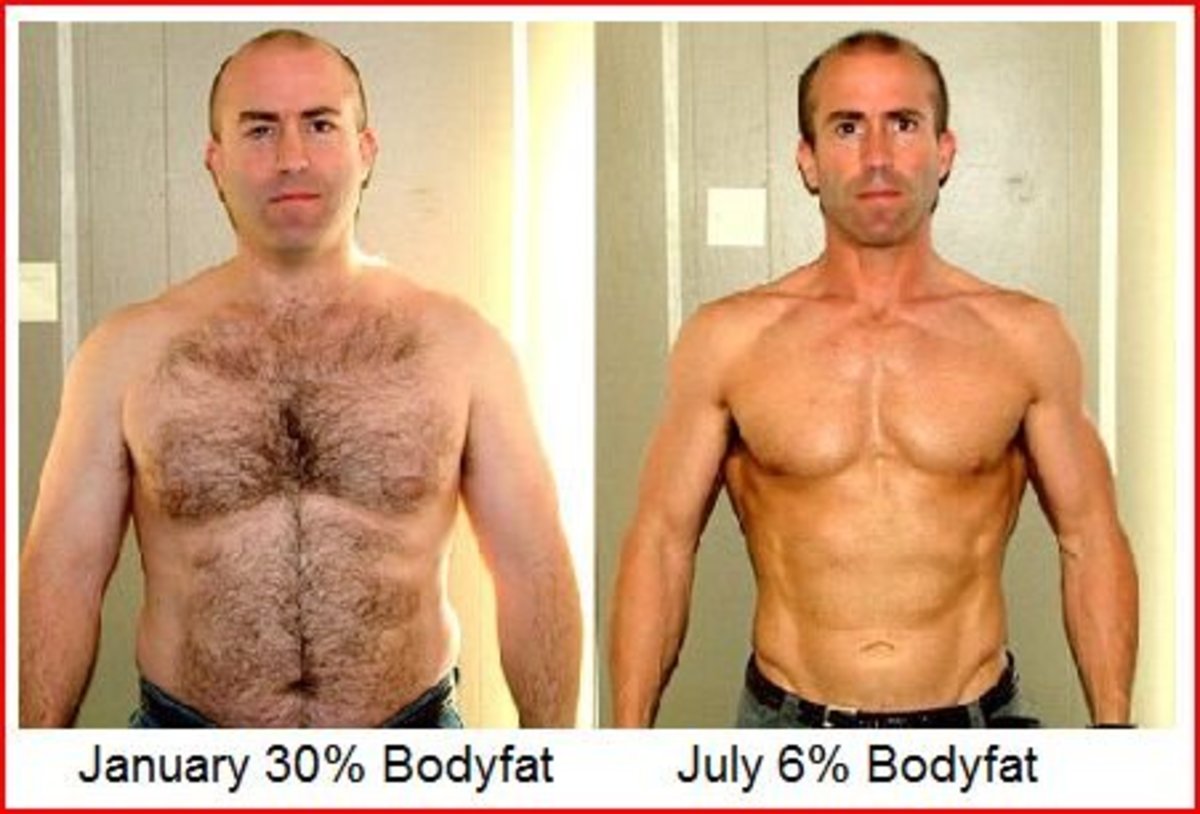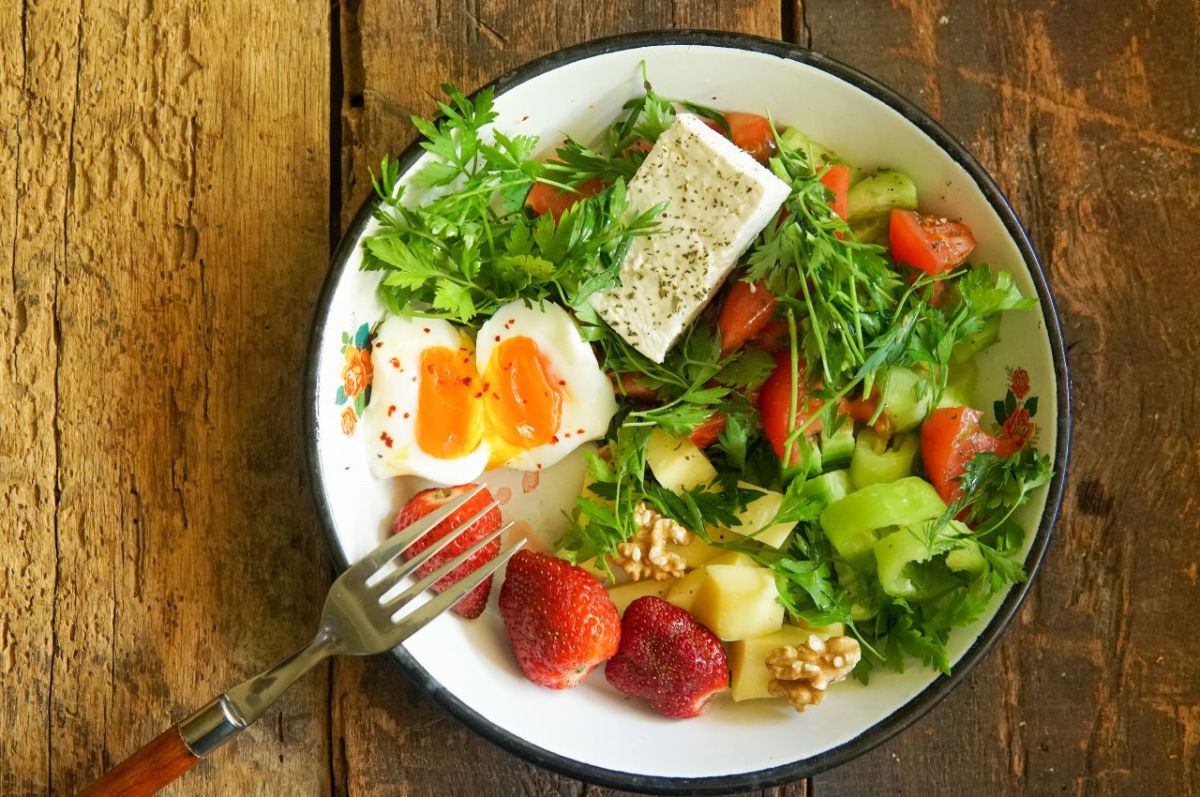Low Carb 101
Introduction
Let me start by saying that I don't like the term "diet" because it conjures up images of eating tiny amounts of awfully boring food. Just using the word makes you want to quit your "diet". I prefer nutrition plan or meal plan. Anything but diet. For this article, I'll use that awful word, but only because it's easier to type.
With that off my chest, low carb diets are starting to gain traction. I caution the term low carb though. There are countless version of the diet. The famous Atkins' diet which almost entirely eliminates carbs for the first few weeks to other versions that are less concerned with the amount but rather the type of carbs eaten. This article is more informational on how our bodies use carbs and how I plan my nutrition and watch my carb intake. My low carb plan may not be as low as an Atkins' diet but when compared to the average carb intake of Americans these days, it's considerably lower.
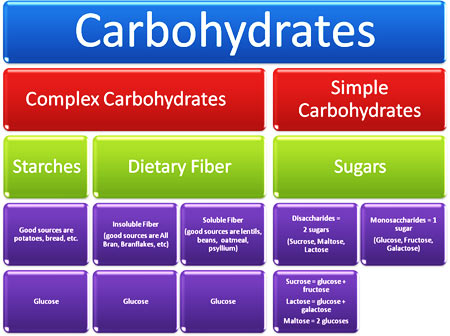
What's a Carb Anyways?
Let's start with the basics. Carb refers to carbohydrate which is a macronutrient from food. It's one of three macronutrients; the other two being protein and fat. Within each macronutrient, there are sub-categories. For carbohydrates, we have simple carbs and complex carbs. It refers to the chemical structure of the molecules. Simple carbs are comprised of either one or two sugars (monosaccharides and disaccharides). Simple carbs are very easy for the body to break down and digest because the chemical structure is simple. As a result, when simple carbs are eaten, they are very quickly digested and absorbed into the blood stream. Complex carbs are made up of three or more sugars. The chemical structure of a complex carb is usually a chain of the different sugars that make up the molecule. The body takes more time to break down and digest complex carbs so the absorption into the blood stream takes longer.
Carb Survey
How many grams of carbs do you think you eat daily?
The Body's Use of Carbs
Since carbohydrates are digested and absorbed into the blood stream so quickly, it gives the body very quick access to energy. The digestion process breaks down the carbs to glucose that elevates the blood sugar levels. Cells in the body that need nutrients absorb the glucose from the blood. Too much glucose in the bloodstream is actually toxic to the body so when the body senses this elevated level of glucose, the pancreas releases the hormone insulin into the blood stream to signal the body to remove the glucose. This is accomplished by converting whatever glucose isn't immediately used by the cells into glycogen in the liver. Glycogen is then stored directly in the muscles and in the liver. There is a limit to the amount of glycogen that the body and liver can hold. Once full, the body can't convert any more glucose into glycogen. Since the blood sugar levels don't drop any further, more insulin is released into the bloodstream to try to force the body to remove the excess glucose. The only other option the body has to remove the glucose is to store it as fat. Fat cells in the body start storing glucose instead of fatty acids. These fatty acids are released into the blood stream as triglycerides.
Brief Note on Protein and Fats
To further understand the use of carbs, the function and uses of proteins and fats are important to understand. Among other things, proteins are the building blocks of the body. All proteins can be broken down into amino acids. These amino acids are used by the body to build new proteins (muscle for example). They can also catalyze chemical reactions in the body, be the means of communication between different cells and move molecules back and forth around the body. Also, when there is an absence of fat or carbs in the body, protein can be broken down and used for energy (preferably protein from food not from existing muscle).
Fats from food are broken down into fatty acids and glycerol in the body. These fatty acids enter the blood stream and are used for energy and stored for later use. In fact, fat is used to fuel about 50% of the body's energy needs. Fat intake also encourages the body to release hormones including testosterone and growth hormone. It isn't possible to live a healthy lifestyle without eating fats.
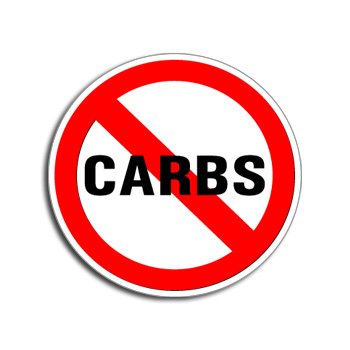
Why Cut Carbs?
It seems so far we have focused on weight gain and fat gain. There are other reasons to cut carbs in addition to fighting obesity.
- Studies have found that eating a high carb diet increases the risk of kidney and esophageal cancer.
- People who eat a high carb diet are 4 times more likely to develop mild cognitive impairment (MCI) which can deteriorate into Alzheimer's Disease.
- High carb diets have been linked to an increased risk for colon cancer recurrence.
- Women are found to be at an increased risk of heart disease with high carb diets, especially with high glycemic foods.
- High carb diets have shown to increase the risk of diabetes, especially in women.
More and more studies are being performed each day. The health world has recognized that high carb diets are unhealthy.
Total Carbs vs. Net Carbs
Total carbs are the raw total of all carbohydrates eaten. This includes carbs that the body can and cannot digest. Net carbs are the number of carbs left after removing the carbs that the body cannot digest. Another term is net effective carbs because these are the carbs that have an effect on the blood sugar level. Fiber, both soluble and insoluble are not digestible and therefore do not count towards the net carbs. Fiber is important for many reason but that is a topic for another article. For the purposes of this article, the focus is on net carbs.
Healthy Carb Intake
This is a sensitive topic. It's human nature to try categorize and group things into neat little packages. Unfortunately for those of you looking for a magic formula for carb intake, I don't have one. There are far too many factors to consider when determining the right amount of carbs per day. One thing I can tell you is that the average American consumes about 500 grams of carbs per day, accounting for over 50% of all calories consumed.
What factors do we need to consider? The most basic, what are you trying to accomplish? Are you trying to build lean muscle or lose fat? Are you simply trying to maintain? That is fairly straight forward but we also need to consider our own individual body chemistry. The only thing I know for sure about nutrition is that everyone is different and what works for one person, may not work for another. We each have to determine how sensitive we are to carbs. Then there is our level of activity. Do you exercise 3 or more days per week? How intense is your exercise? It's no wonder we look for a simple answer or guide to follow. This can be confusing! Rather than give advice that will probably be wrong for some people, I'll share what I've learned, mostly from trial and error on myself.
Cutting Stage
Here are a few stats about myself before we start. I'm 36 years old, I'm 5'-5" tall and I am active at least 3 days per week. Generally, it's more like 4-5 days. Right now, I weigh about 145 lbs. I consider myself to be in very good health with no restrictions on how often or how intense I can exercise. I generally burn about 2500 to 2800 calories per day on average.
When I'm in a cutting stage, I am trying to lose body fat that I gained either from a building stage that I just ended, busy summer with lots of barbecues or any other reason that results in some weight gain. Through trial and error, I have found that I am moderately sensitive to carbs, especially sugar. When I'm in this stage, I target no more than 90 grams of net carbs per day. Less if I can but never below 50 grams. In addition, I try to maintain 25 grams of fiber per day. The rest of my nutrition comes from protein and fat. I target a ratio of 40% protein, 40% fat and 20% carbs. For my cutting target of 1800 calories, that equates to 180 grams of protein and 80 grams of fat to go along with 90 grams of net carbs. On days that I'm inactive, I tend to let my calorie intake fall a bit and reduce my carbs to about 50 grams.
Building Stage
In this stage, my focus is to build lean muscle mass. I tend to be less active overall because I cut down on most of my cardio. I boost my total calorie intake to about 3000 and my calories burned around 2400-2500 per day. I adjust my ratio so that my carb intake is about 40% of my total calories and protein and fat are each 30%. That equates to 300 grams of carbs, 225 grams of protein and 100 grams of fat. I would suggest increasing your protein intake over a period of time. Some people are more sensitive to protein and it can cause problems with their liver. I've found that my body can handle this level of protein so I know it's safe for me. I also don't stay on a building stage for long periods of time, about 4 weeks at a time.
Maintenance Stage
When I'm not trying to build muscle or lose fat, I'm just maintaining. In reality, this is where I spend most of my time. I play soccer in the spring and the summer which makes it difficult to stay on a routine. I just try to maintain my weight and muscle mass during this time. I try to keep the calories I eat and the calories I burn about the same, about 2300 calories per day. I also balance my nutrition intake, about 1/3 protein, 1/3 fat and 1/3 carbs. That's about 190 grams of protein, 190 grams of carbs and 85 grams of fat. Through all stages, I try to keep at least 25 grams of fiber in my plan per day. This can be a challenge when limiting carbs. To help with that, I use Barn Dad's Ultra Fiber DX. It gives 11 grams of fiber per serving, both soluble and insoluble. It mixes very well with protein shakes but it can also be added to pancake batter, scrambled eggs, omelets or just drink it straight.
The Glycemic Index
The glycemic index is a measure of a foods impact on your blood sugar levels. Foods with a higher glycemic index cause more rapid and faster rises in blood sugar than foods with a lower index. Foods with a glycemic index above 50 are considered high glycemic.
Good Carbs & Bad Carbs
It's pretty clear that the average person in America eats too many carbs. For me personally, my maximum carb intake during a muscle building stage is only slightly more than half of the average American carb intake of 500+ grams. When you decide to cut carbs, what should you cut out? How to tell the difference between good carbs and bad carbs? It's actually pretty simple. The more refined a carb is, the worse it is. Sugar, baked goods, breads and pasta are all refined carbs and are a good place to start cutting. Even whole grain and multigrain breads and pastas are refined and should be avoided, although they are not as bad. This is where most people bail out on the low carb lifestyle. How to get by without these things? It takes some effort but there are alternatives that we'll get into that later. For now, what are good carbs? Fresh fruit and vegetables are the best. Although fruit contains fructose, which is a simple carb, it is still a good carb because most fruits are high in fiber. There are also many fruits that are low glycemic as well. Similarly, white potatoes are a simple carb but don't need to be avoided (avoid turning them into french fries) but baked potatoes are a good source of carbs (sweet potatoes are better). I try to avoid them during my cutting stages though because a single potato and cover your full days worth of carbs.
Nutrition 101
view quiz statistics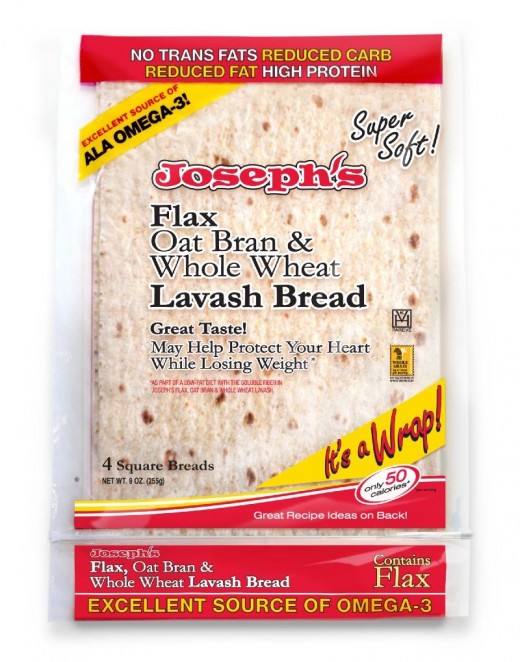
Final Thoughts on Carbs
Lowering our carb intake is easier for some than it is on others. Some of us need to reduce it further than others. Individual body chemistry is one of the biggest factors. My wife and I are great examples of that. She is asian and has a much higher tolerance for carbs than I do, being caucasian. Her body chemistry is the result of thousands of years of adaptation to her ancestral diet that's high in rice. She can eat far more carbs than I can and not experience the negative effects that I do.
For those of us who aren't so lucky, we have to learn to live without some things we enjoy. For me, it wasn't too difficult. I'm not a sandwich person or a bread person so cutting that out wasn't hard. I like pasta but I found a great substitute. Shirataki noodles are sold in all the supermarkets near me. They are made from tofu and a few other ingredients but are almost zero carb and zero calories. It's mostly fiber. They have no flavor of their own and have a similar shape and consistency to pasta. Add your favorite sauce and you have a plate of low carb pasta!
For those of you that like the convenience of sandwiches, I have another great alternative. Joseph's Whole Wheat Lavash Bread. It's only 4 grams of net carbs each. They are like rectangular flour tortillas, so they make great wraps. I use them for all kinds of things. I use them as pizza crust for a quick flatbread pizza. I wrap up salad to make a chicken caesar wrap. In the mornings, I make myself ham, egg and cheese wraps. I even found that I can toast them and spread a little butter for a crunchy snack. Never underestimate the satisfaction of just having something to crunch on!
For sugar and sweetness, I have a couple of alternatives. I sweeten my morning cup of tea with Splenda. I've read studies that suggest artificial sweeteners make you feel more hungry and actually cause you to eat more. I haven't found that to be true with me but be aware that this is a risk. For green tea, I use agave nectar. It's about 50% sweeter than sugar so you can use less but more importantly, it's a low glycemic sweetener. I also use it as a sugar replacement when baking as well.
There are other ways to eat your favorite foods and still cut carbs. It just takes a little creativity. Have some other ideas? Comment below and tell me your low carb substitute! I'm always looking for new ideas for myself!

